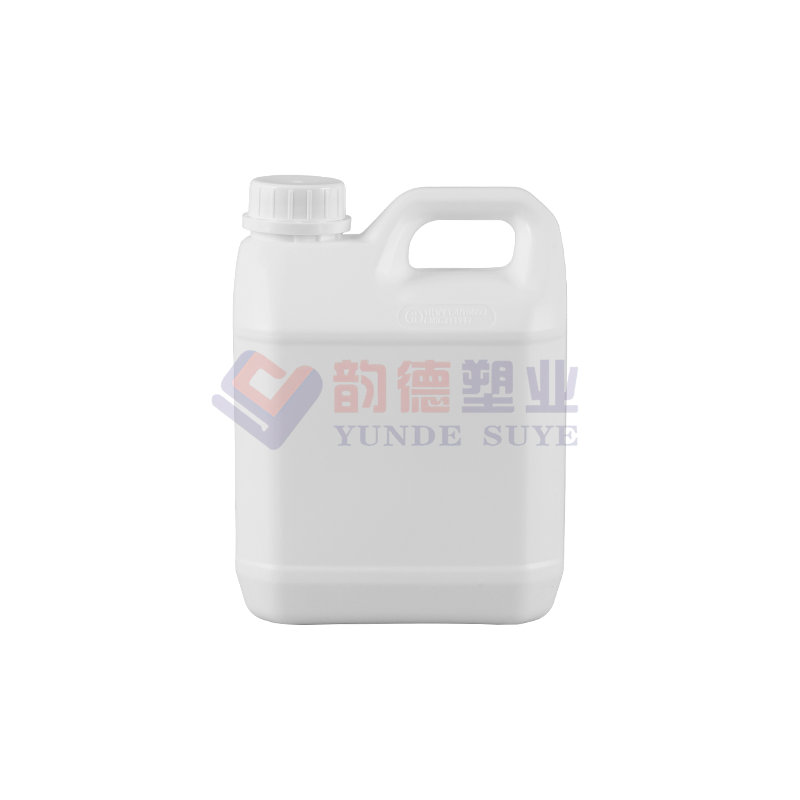Fluorinated Round Bottles
Are HDPE square barrels resistant to acid, alkali and corrosion?
1. Introduction to HDPE square barrels
The HDPE square barrel is a common packaging and storage solution in industrial and commercial applications. Produced mainly from thermoplastic HDPE, these containers are widely adopted because of their durability, resistance to chemicals, and adaptability in different industries. Compared with traditional round bottle plastic or other pp material products, HDPE square barrels offer structural stability and efficient use of space. Their production involves a well-developed HDPE production process, which ensures consistent material performance and safety in long-term storage.
2. Material properties of thermoplastic HDPE
The fundamental reason why HDPE square barrels are widely used is the chemical nature of thermoplastic HDPE. As a high-density polymer, it has excellent toughness, flexibility, and resistance to environmental stress cracking. Compared with other plastics used in bottle packaging material or pp material products, HDPE has lower permeability to water and gases, making it suitable for packaging sensitive products. Additionally, the HDPE barrier provides an extra layer of safety against external reactions, ensuring that the barrel remains stable even when in contact with harsh substances.

3. Resistance to acid, alkali, and corrosion
HDPE square barrels are widely recognized for their strong resistance to acids, alkalis, and corrosive substances. When compared to containers made from other plastics, such as standard round bottle plastic, the resistance of HDPE is considerably higher. The chemical structure of HDPE minimizes reactivity, which allows it to be used as chemical resistant bottles and chemical resistant containers. This makes it particularly suitable for industries dealing with strong acids, bases, and solvents. The ability to withstand such environments without degradation ensures both safety and longevity of the packaging.
Acid and Alkali Resistance of Different Packaging Materials
| Material Type | Acid Resistance | Alkali Resistance | Corrosion Resistance |
|---|---|---|---|
| Thermoplastic HDPE | High | High | Strong |
| PP material products | Medium | Medium | Moderate |
| Standard round bottle plastic | Low | Low | Weak |
4. Applications in chemical storage
The high chemical resistance of HDPE square barrels makes them widely used for chemical storage and transport. Many HDPE plastic manufacturers and HDPE plastic bottle manufacturers design barrels specifically for corrosive liquid storage. These include acids, cleaning solutions, and alkaline materials, which require containers capable of withstanding long-term exposure. Unlike ordinary HDPE plastic bucket or non-specialized plastics, the square barrel’s structural design combined with HDPE wrapping and polyethylene packaging material ensures safe handling. As a result, these barrels are adopted in industries such as agriculture, chemical production, and wastewater treatment.
5. Safety in pharmaceutical and food industries
In addition to chemicals, HDPE barrels are also used in sectors requiring high hygiene standards. HDPE bottles for pharmaceutical applications, as well as HDPE plastic packaging for food products, take advantage of the material’s resistance to contamination. The non-toxic nature of bottle pp and HDPE prevents reactions with stored substances, which is crucial in pharmaceuticals and food storage. Compared with ordinary containers, HDPE barrels minimize the risk of leaching harmful compounds, making them reliable bottle packaging material in sensitive industries.
Examples of HDPE Square Barrel Applications
| Industry | Usage Example |
|---|---|
| Chemical Industry | Storage of acids, alkalis, solvents |
| Pharmaceutical | HDPE bottles for pharmaceutical solutions |
| Food Industry | Storage of additives and ingredients |
| Agriculture | Containers for pesticides and liquid fertilizers |
6. Durability under temperature variations
One of the additional benefits of HDPE square barrels is their resistance to different temperature ranges. The HDPE temperature resistance allows them to maintain stability in both low and moderately high temperatures, which is particularly important when storing corrosive substances that may be reactive under temperature changes. Ordinary containers may lose structural integrity when exposed to extreme cold or heat, but thermoplastic HDPE ensures consistent performance. This adaptability makes them reliable not only for storage but also for transportation under varying environmental conditions.
7. Structural design advantages
The square shape of HDPE barrels is not only for space efficiency but also contributes to chemical resistance. The shape ensures better stacking, minimizing movement and reducing the chance of leakage during storage or transport. When combined with HDPE wrapping or additional sealing methods, the HDPE square barrel provides an effective solution against leakage of acids or alkalis. Ordinary round bottle plastic containers are more prone to gaps during stacking, which may increase risks in industrial environments.
8. Customization by manufacturers
Another important feature of HDPE square barrels is the customization available through HDPE plastic manufacturers and HDPE plastic bottle manufacturers. Depending on the requirements, barrels can be designed with thicker walls, double layers, or reinforced HDPE barrier technology to enhance resistance against specific corrosive substances. This level of customization is not always available with other plastics or with standard HDPE plastic bucket models. Additionally, companies can select from various polyethylene packaging material and bottle pp designs to suit specialized applications.
9. Environmental considerations and recyclability
Apart from their chemical resistance, HDPE barrels are also considered more sustainable compared to many other plastics. Since HDPE is recyclable, used barrels can be reprocessed into new HDPE plastic packaging or even other pp material products, reducing overall waste. Industries benefit from both the functional performance of HDPE and its contribution to sustainability goals. This ensures that the use of HDPE square barrels aligns with broader environmental and regulatory standards.
Comparison of Environmental Characteristics
| Container Type | Recyclability | Environmental Impact |
|---|---|---|
| HDPE square barrel | High | Low |
| PP material products | Medium | Medium |
| Ordinary round plastic | Low | Higher |

 English
English 中文简体
中文简体 Español
Español عربى
عربى











